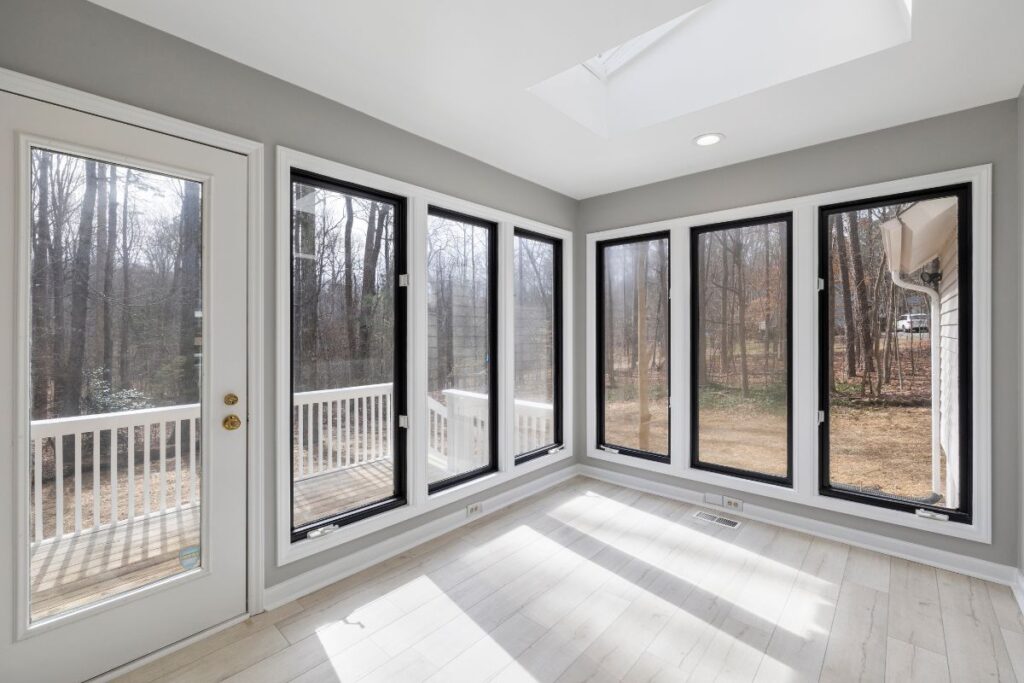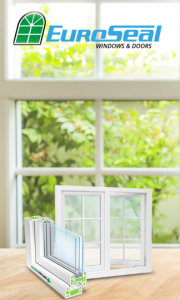CALL US: 416-650-5070
Menu
CALL US: 416-650-5070
CALL US: 416-650-5070
Finding energy-efficient solutions is essential, right? Especially for window replacement in the GTA. Materials that reduce energy consumption are becoming more important as sustainable practices increase.
One example material is Low-E window glass. This glass offers a balanced approach to improving thermal performance while maximizing natural light. There are actually three notable coatings of Low-E window glass, including the 180, 272, and 366.
We will delve into the details of each coating by explaining their unique features and advantages. Just keep reading to learn which type of window glass is right for your home in Toronto!

Low-E window glass is advanced glass that can reduce heat transfer. This serves as a barrier between the inside and outside of a building. The term Low-E actually stands for low-emissivity, which refers to how well a material emits radiant energy. With Low-E glass, manufacturers add a thin, nearly invisible metallic coating to the glass surface to change its emissive properties.
You can mainly use Low-E glass to regulate the movement of infrared radiation. It assists in maintaining a cooler indoor environment during summer and a warmer one during winter. It achieves this by allowing visible light to pass through while reflecting and preventing the infrared and ultraviolet parts of the solar spectrum.
Buildings equipped with Low-E glass benefit from better insulation, lower energy usage, and increased comfort for those inside!
When sunlight hits a window, it consists of visible light, infrared radiation, and ultraviolet rays. Conventional windows allow all of these elements to enter, which results in uneven temperatures. This would make homeowners dependent and spend more on heating or cooling systems.
Low-E coatings work by reflecting and absorbing certain wavelengths. The metallic layer on the glass reflects a large amount of infrared radiation back to where it came from. At the same time, it allows visible light to pass through easily. This unique feature of Low-E glass allows it to adjust to seasonal changes.
Low-E glass plays a crucial role in saving energy by reducing heat transfer. In colder areas, it stops heat from escaping the building. In hotter regions, it prevents the sun’s heat from entering indoor spaces. This leads to a more consistent and pleasant indoor atmosphere, lower energy costs, and a smaller carbon footprint.
180 Low-E glass stands out because of its unique coating composition and thickness. The manufacturer will apply a coating made up of metallic oxide layers to the glass surface. The thickness of the coating can enhance its performance in reflecting and absorbing infrared radiation.
What makes 180 Low-E glass special is its ability to reduce heat loss while still allowing plenty of natural light to enter your home. The composition of the 180 coating ensures that it reflects infrared heat while still allowing visible light to pass through, creating a vibrant and welcoming interior environment.
The benefits of 180 Low-E glass include:
The coating on 272 Low-E glass can surpass standard performance, unlike regular low-emissivity coatings. It incorporates advancements that improve its ability to control heat transfer.
This particular Low-E coating has optimized composition, which ensures excellent management of solar heat gain and thermal insulation. The combination of special materials and increased thickness sets 272 Low-E glass apart from the other glass types. This allows it to achieve a perfect balance between maximizing natural light penetration and minimizing undesirable heat gain or loss.
Some benefits of 272 Low-E glass include:
366 Low-E glass is the highest strength glass. This special glass is made up of several layers of metallic oxide coatings on top-quality glass. It is specifically designed to maximize energy efficiency and offer outstanding insulation.
This glass has a very thin layer of silver in between anti-reflective coatings. The coating helps to reduce the amount of heat that is emitted from the glass and allows a lot of visible light to pass through. The layers also provide the best solar control while still allowing a clear view through the windows.
The benefits of 366 Low-E glass include:
As a homeowner, you need to understand the details of Low-E glass coatings in order to make informed choices about window replacement.
Here is a comparison of the three main types:
180 Low-E glass is well-known for its ability to reduce heat loss, making it a dependable option for keeping the interior warm.
272 Low-E glass provides improved thermal insulation and may outperform 180 Low-E glass in colder regions in Canada.
366 Low-E glass offers exceptional insulation properties and performs well in both hot and cold climates, making it a versatile choice for comfort all year round.
180 Low-E glass maintains a good balance between solar heat gain and natural light, making it ideal for areas with different temperature ranges.
272 Low-E glass provides better control over solar heat, making it a top choice for projects that prioritize managing heat gain.
366 Low-E glass achieves the perfect equilibrium between visible light transmission and solar heat gain. This ensures a pleasant indoor environment in different climates.
180 Low-E glass provides enough natural light while still being energy efficient. This is a good choice for those on a budget.
272 Low-E glass offers a perfect blend of natural light and heat control for projects that value both.
366 Low-E glass achieves a suitable balance between natural light and solar heat gain, resulting in energy-efficient and well-illuminated spaces.
As we’ve looked at the benefits and functions of each glass type, it’s clear that 366 Low-E glass is the top choice. This glass is made with advanced materials, which make it durable in the long term. It has the perfect balance between allowing visible light transmission and reducing solar heat gain, promoting daylight harvesting and enhancing your overall home.
By selecting 366 Low-E glass, you can meet strict energy efficiency standards. You will also contribute to the promotion of green building practices!
If you’re looking for window replacement in Toronto, consider choosing our window company in the GTA. Euroseal has years of experience replacing doors and windows. Contact us now to learn more about the best window glass options.

Read more